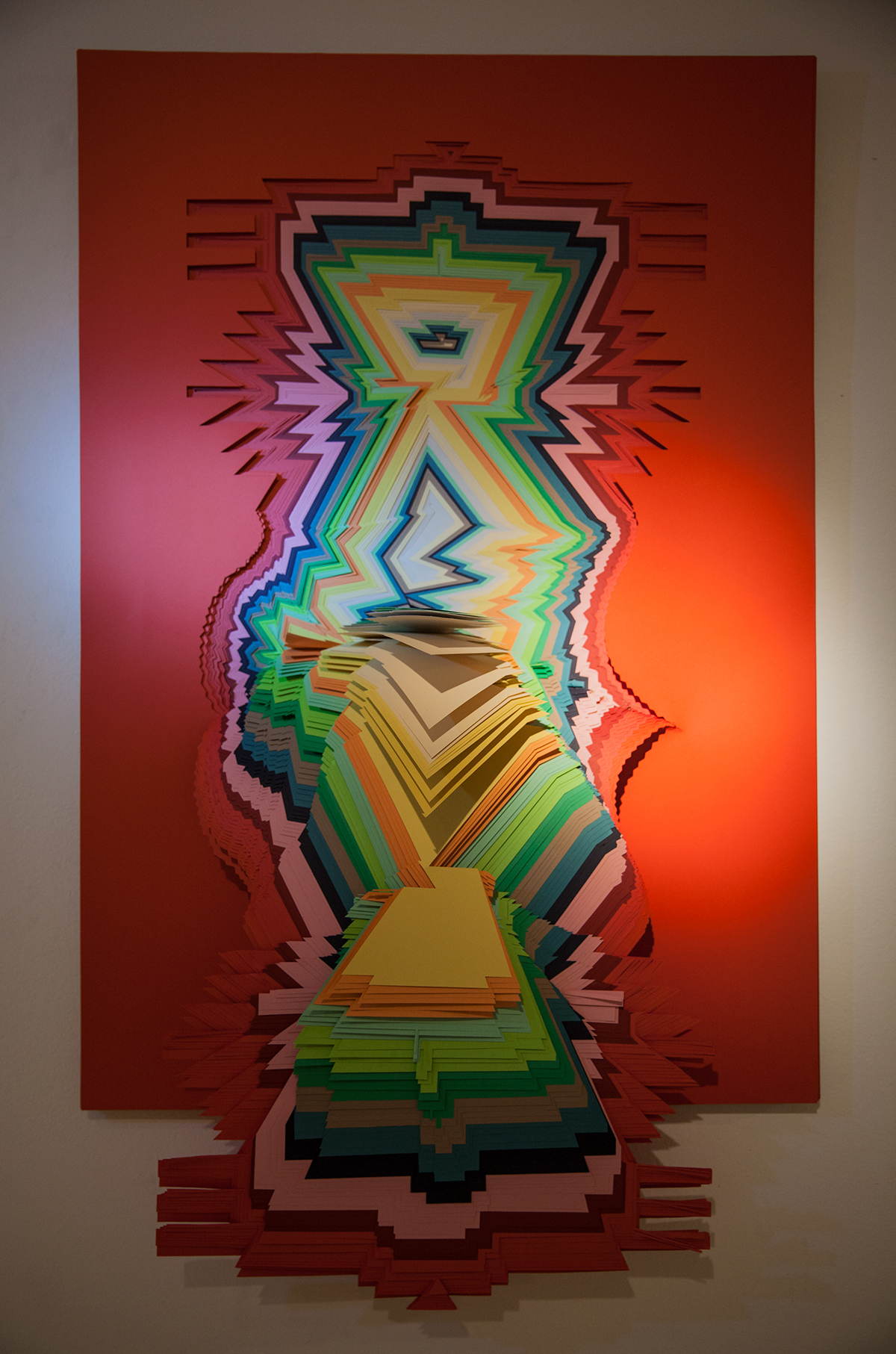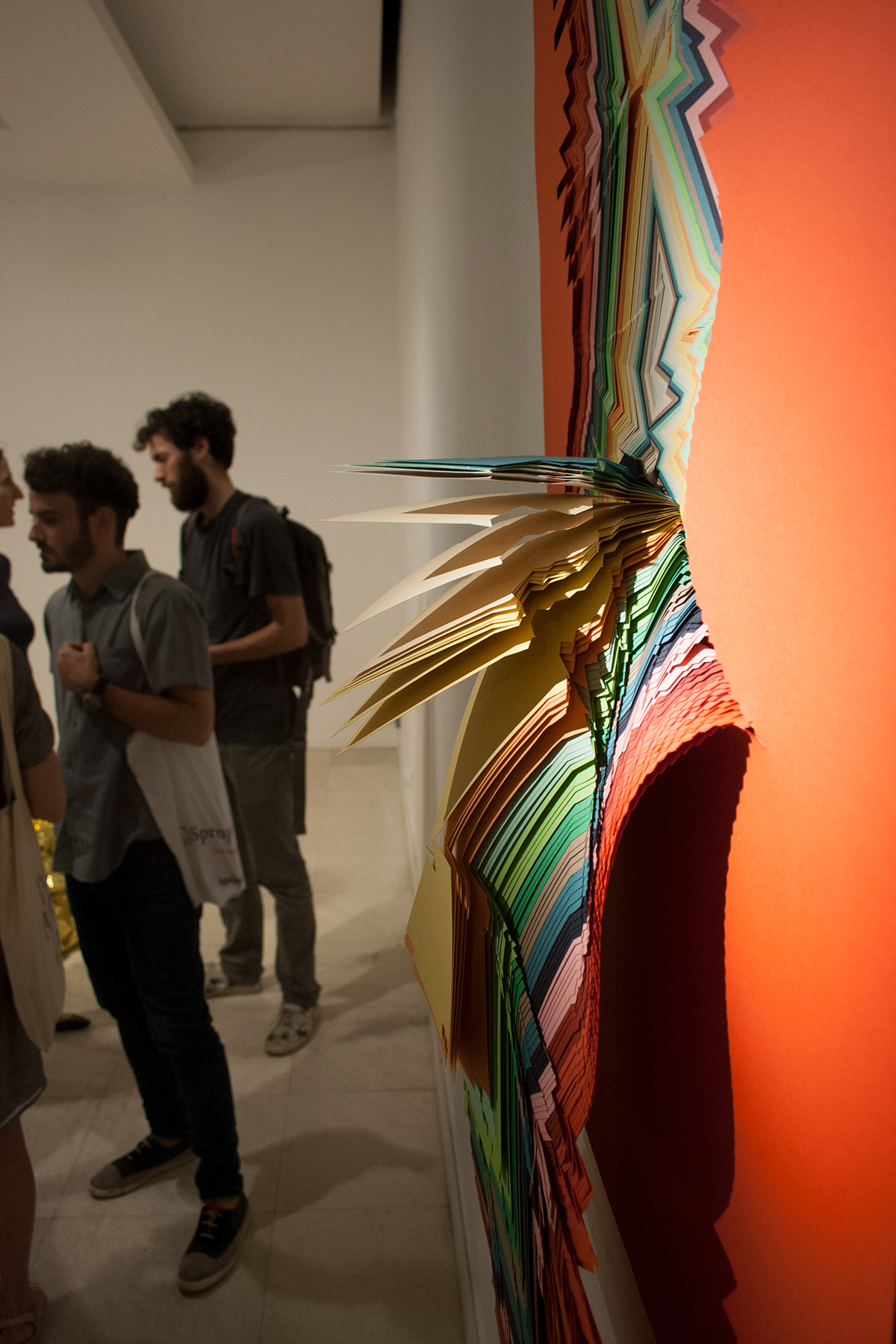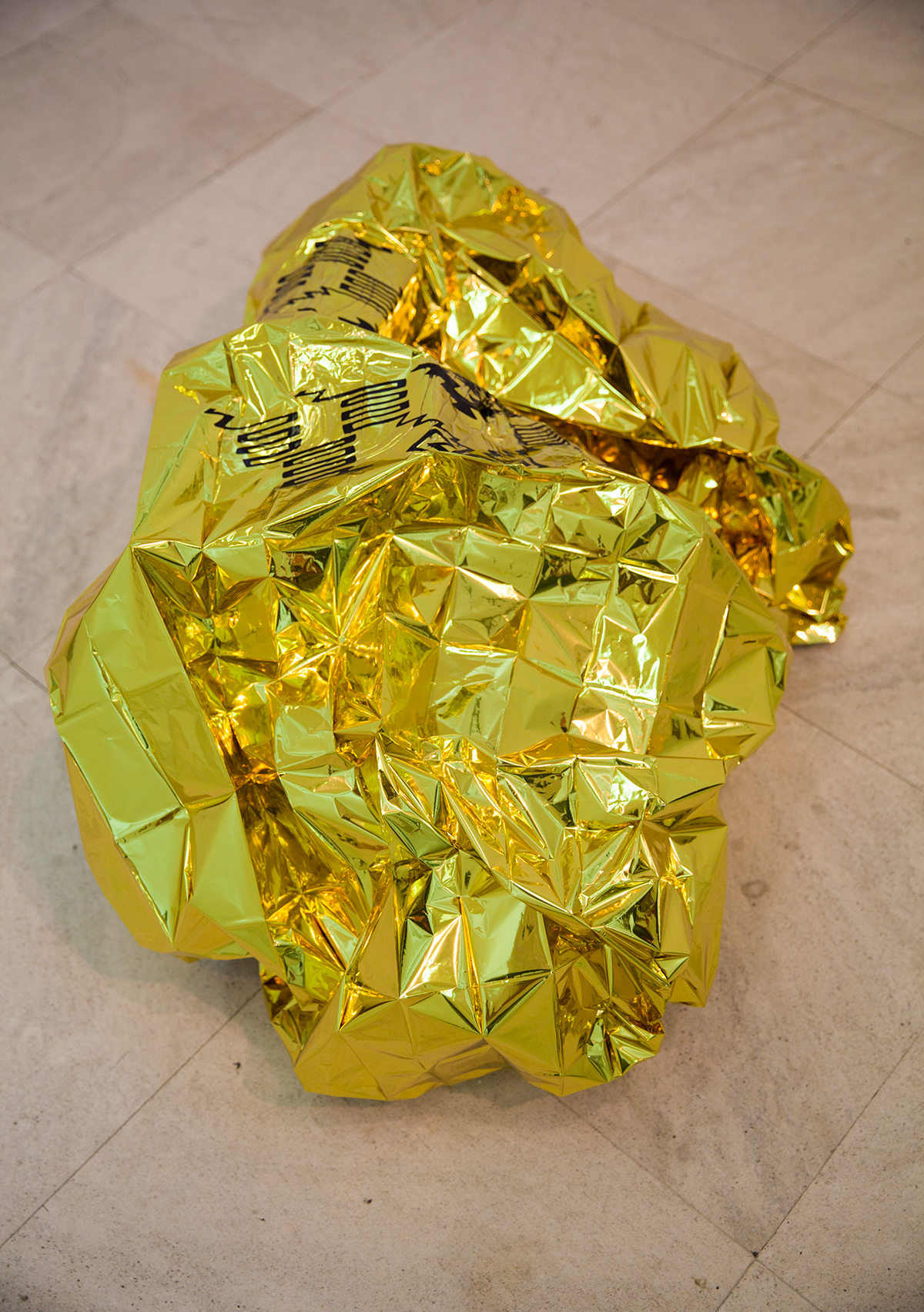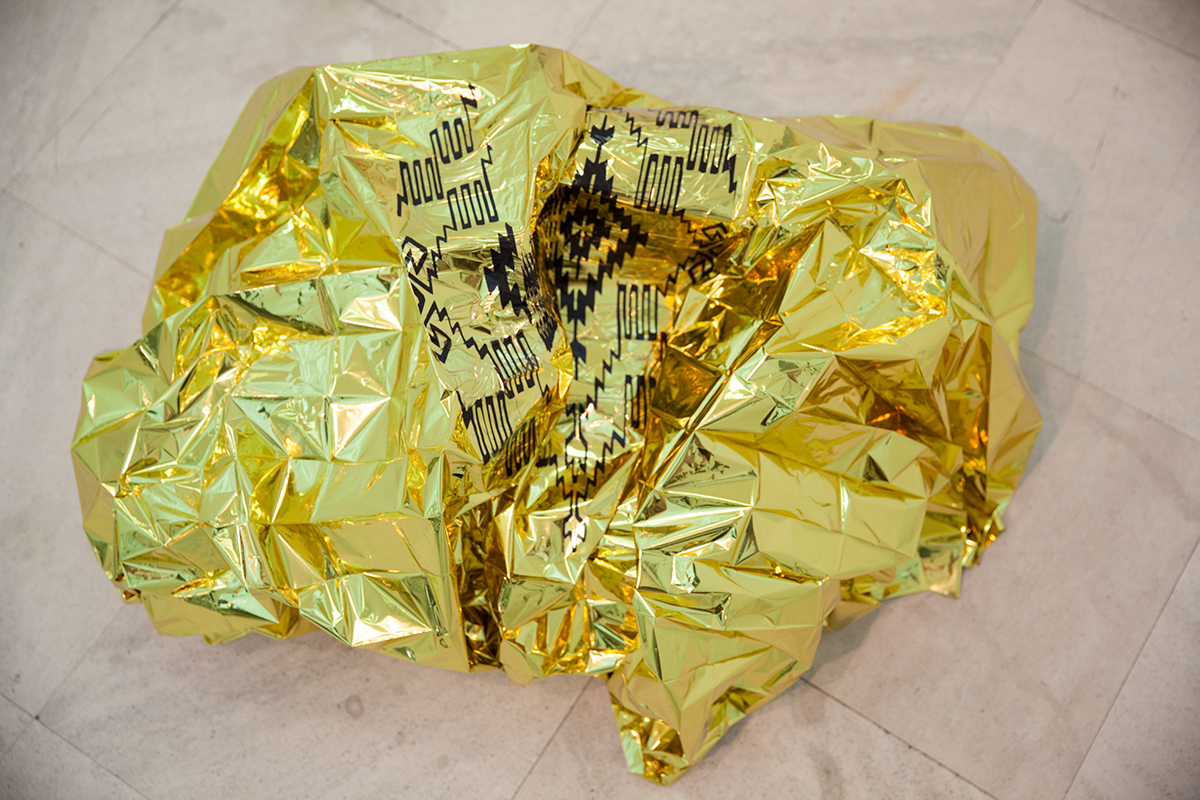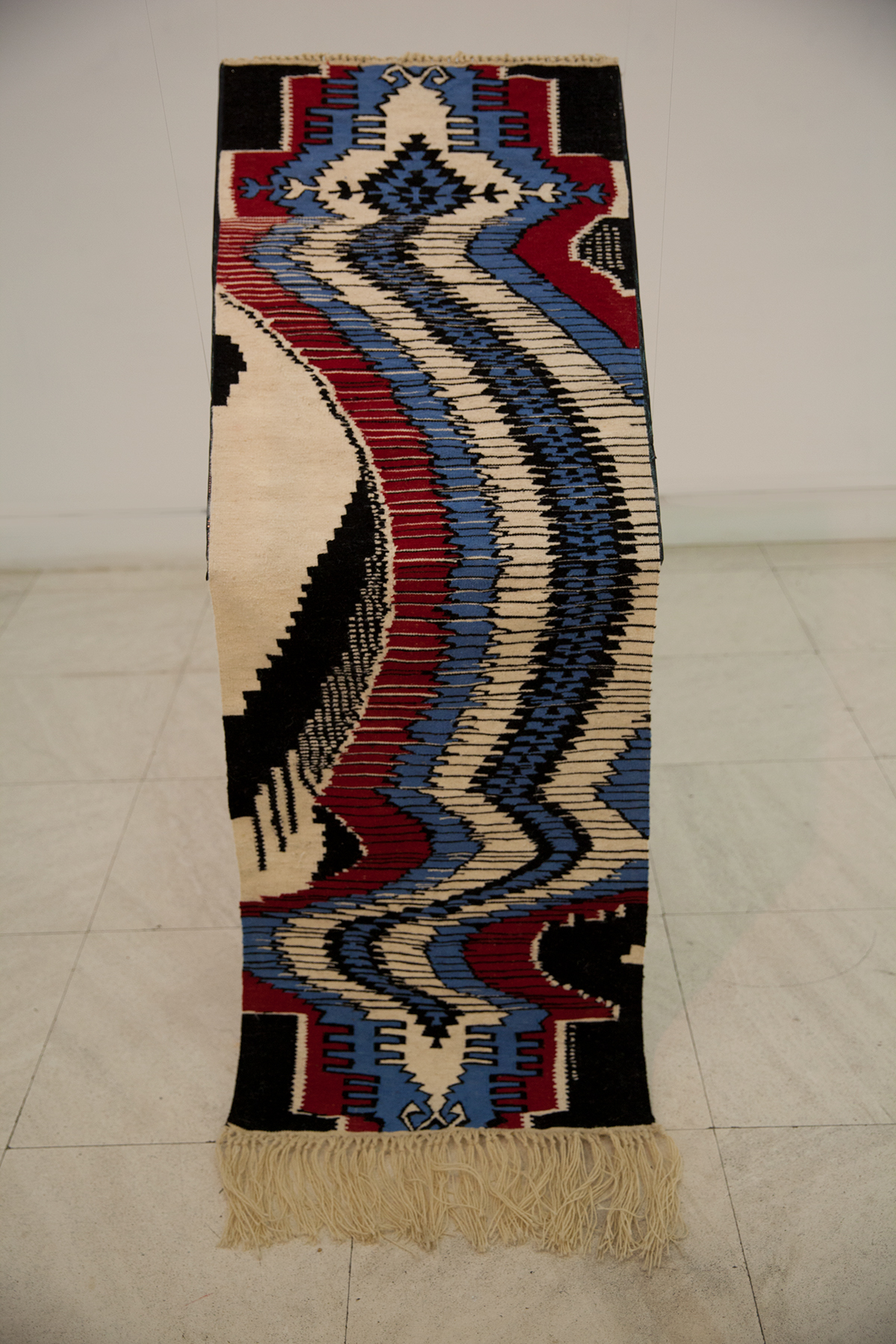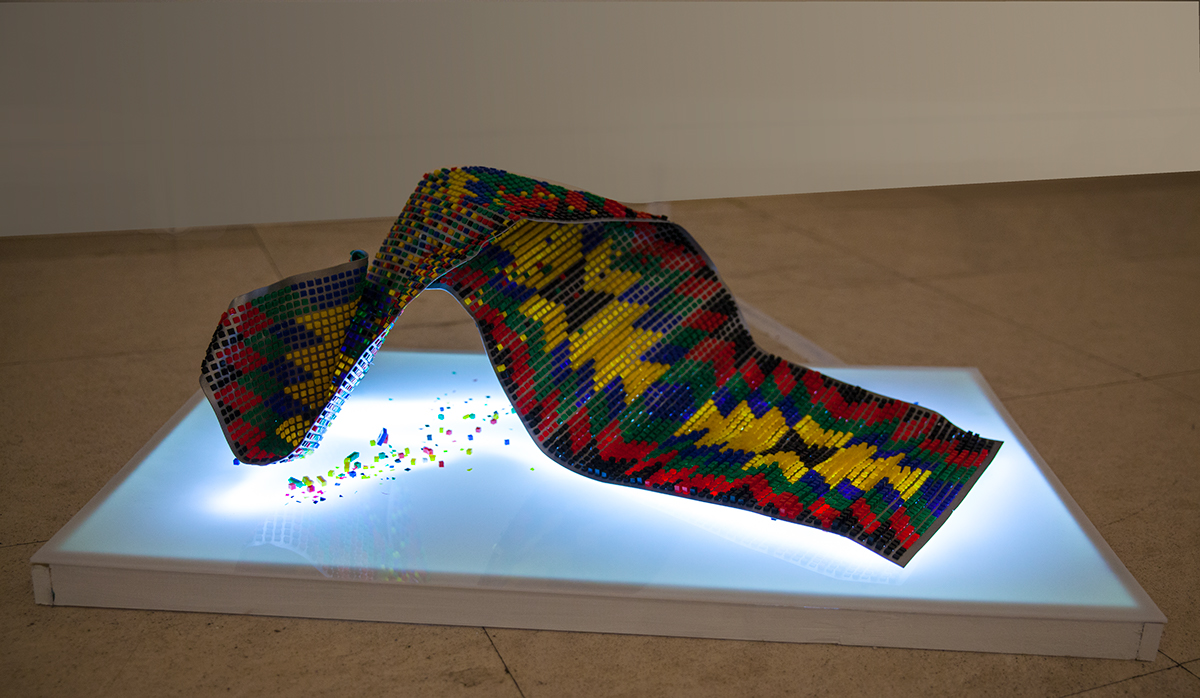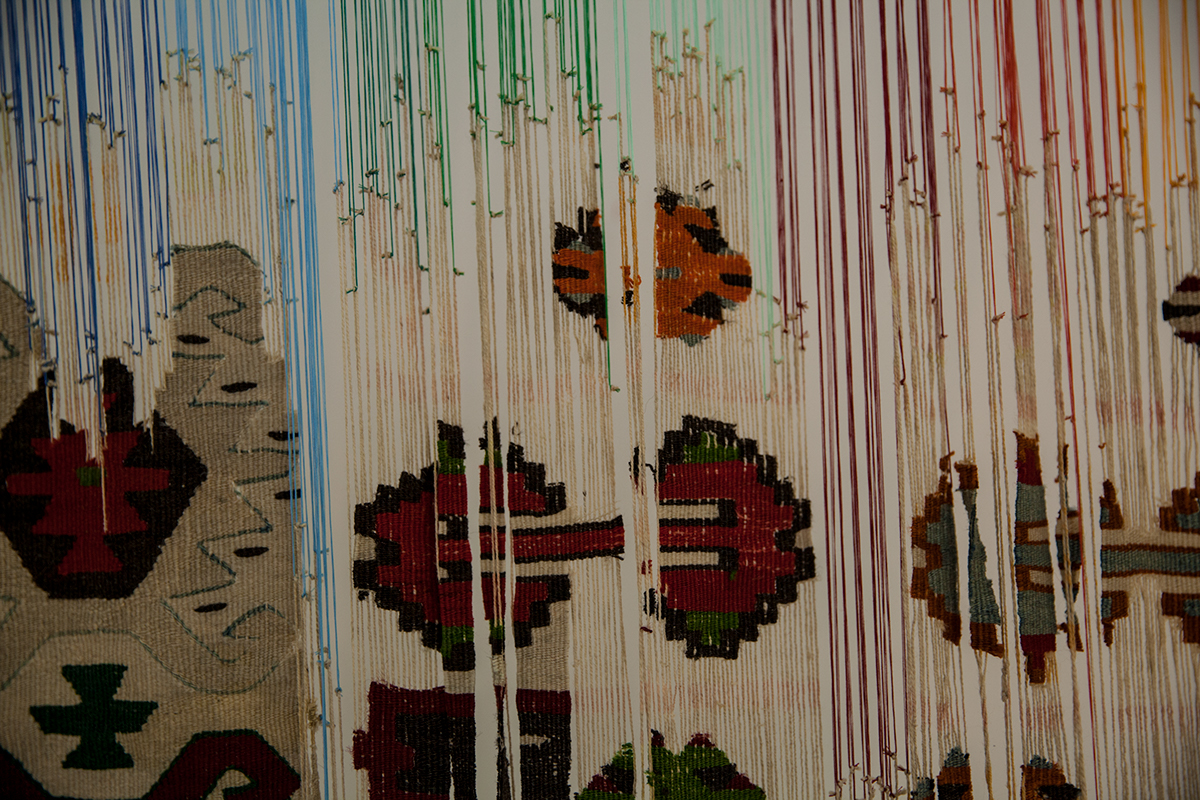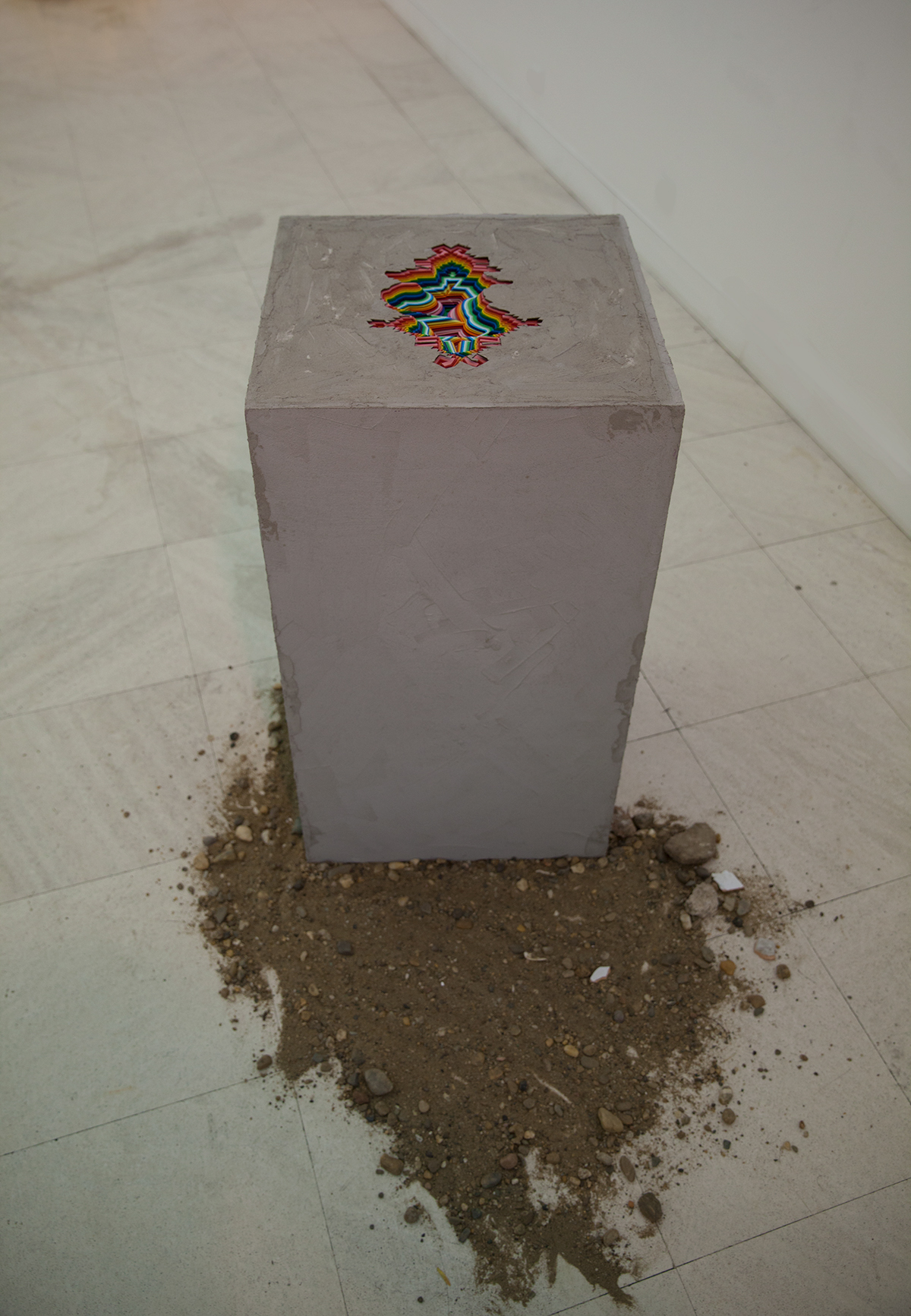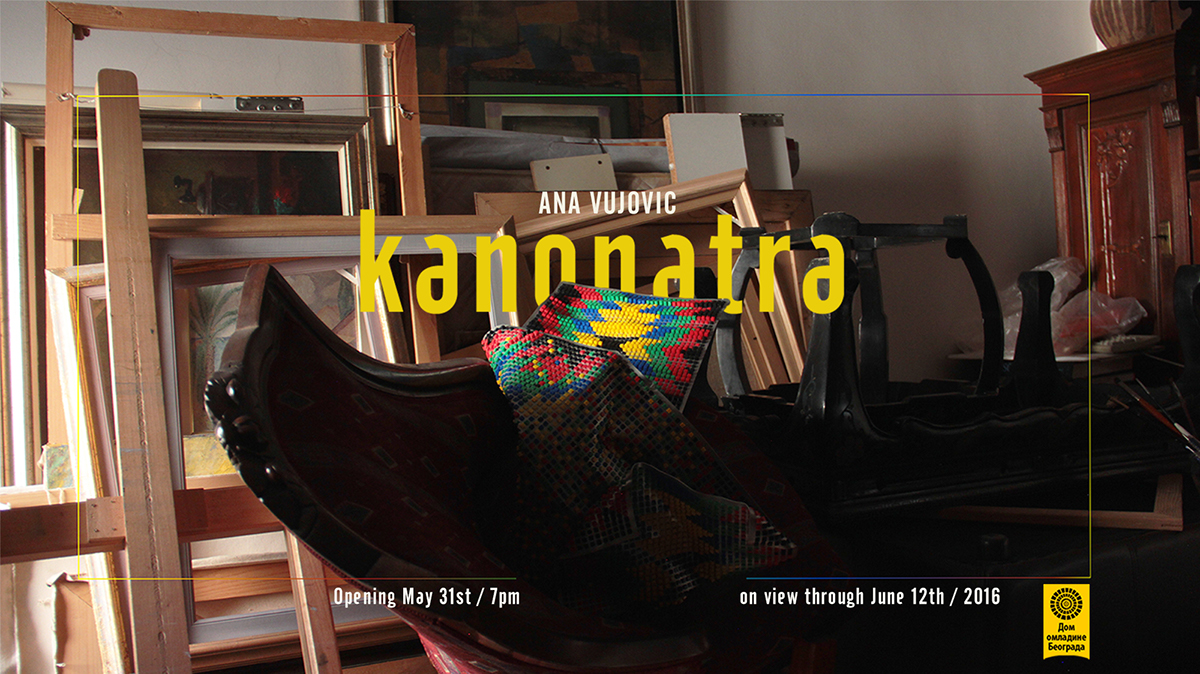
CANONATRA
“If the western literate man is truly interested in the wellbeing of the highest creative aspects of civilization, he will not seek shelter in an ivory tower grieving over change, he will, instead, jump into the fray with electric technology and determine the new surroundings through understanding – transforming the ivory tower into a control tower.”
М. McLuhan
For a long time visual art has not been perceived just as a field of human creative action which operates exclusively through emotions and aesthetic categories. Art, as well as science, conducts extensive visual research and analysis, asks questions and delivers varying results, offers truth, personal “artistic truth”. Today visual art represents a sum of assumptions, concepts, and research methods and constructs visual phenomenon. A new visual phenomenon that we have before us is Canonatra from Ana Vujović. The term itself is a derivative made by the author. It is comprised of two words: the first is canon, which refers to a group of strict, well-determined rules and thresholds set by tradition, with which the artist deals with through her research. The second word, which sounds archaic, natra, refers to a weaving frame. It is also a distinct element of pre-Slavic tradition which had various defining terms in various parts of Serbia. Natra1 was exclusively used in western Serbia.
With special dedication, Ana Vujović begins her research in the field of tradition, dealing with one of the most important aspects of applied arts within the domain of cultural heritage – the rug. The aesthetics of the handmade rug is connected to the tradition of the Balkan people displayed through motifs, form and shapes of national ornaments. Today, apart from a higher level of consciousness regarding the importance of cultural heritage, we can also come across misinterpretations, even vulgar glorification of national tradition in an unnecessary and conservative comparison with contemporary visual art. Disregarding all risks brought in by the sensitivity of the subject matter, Ana Vujović begins her visual research in a field marked and defined by three things: firstly – by rigid canons of traditions which dictate rules and precision in the production of rug ornaments; secondly – by precious personal emotional memories of her grandmother as a keeper of natra canons in her own family, and thirdly – by the burden of xenophobic self-identification of cultural heritage with patriotic feelings of national belonging. Into such a sensitive field, defined by science, family history, and popular quasi-patriotism, Ana Vujović boldly introduces a glitch, playing with canons of tradition and its "analog" language, opposing and confronting it with the language of digital media, spoiling and deforming the expected traditional image.
In the value and worth structure of such artistic action, we can find an almost avant-garde, or even usurping potential. Works of art created in this way create a "conflict of the eye and brain" and demand an all-inclusive intellectual thinking. By exploring the visual meaning in these works we can sense varying processes. By introducing new elements to the field of tradition, as well as aesthetic modification, the consequences of the influence of digital elements are processes through which the authors ideas and visual mark are filtered. Effects which are reminiscent of optical art create various psychological visual effects and reactions in the viewer through the deformations of objects. Such an analytical approach by the artist forces the viewer to question if this is how "anti-art" is created in order to oppose the canons. And who creates "anti-art"? Who makes the mistake? We find that the mistake is not made by a person who firmly upholds the canons. The mistake is made by a machine or modern digital technology, and this artist, through traditional analog mediums, simulates this mistake principle created by modern technology.
The visual and metaphorical whole of the Canonatra series becomes as a collection of multiple, equally important elements, just as the working technique, used materials, color, and texture of materials. Materials such as wool, ink, paper, cardboard, ground metal slabs, plastic, in the function of organic, "analog" means, represent synthetic visual forms. Using terms from the digital glossary (the pixel, RGB), we can describe the raw, plastic, digital system of colors from the Canonatra series.
Having worked on this idea for three years, developing and changing it, Ana Vujović based her artistic contemplation on an open criticism of the hypocrisy of society, the dehumanization of social surroundings and deformed values that, contrary to the advancement of technology, are taking civilization a step back. The group of works Kanonatra opens a dialogue by analyzing the relationships between two different visual languages, by putting the question of manipulation and deformation within social themes in question. We are given a visual commentary of the twisted system of values and the cruelty of a tribalized society we live in through a motif of a deformed ornament. The idea of the visual phenomenon Canonatra is aestheticization which is presented as a possible version of the present.
/Slađana Petrović Varagić, art historian/
